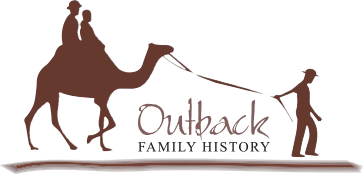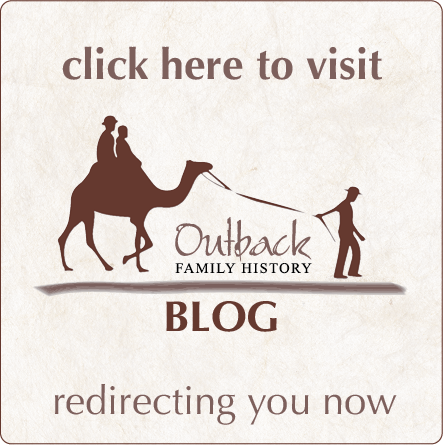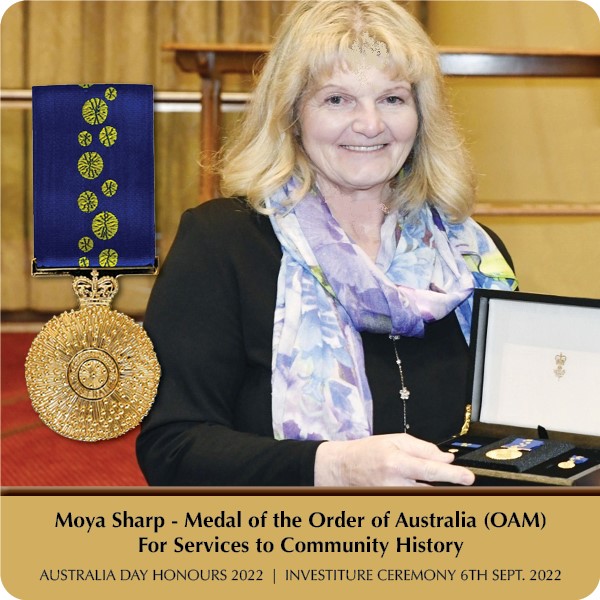- Aboriginal History
- Cemeteries
- Hospitals
- Hotels
- Maps of the Goldfields
- Military
- Miners
- Miscellaneous
- People
- Places on the Goldfields
- Place Index A-Z
This website is dedicated to the memory of my two dear friends Sandy Duncan and Shyama Peebles who both passed away in 2012.
Certificates - take with a pinch of salt
Have you ever purchased a copy of a family death certificate in Western Australia? I am sure many of you will have done so. I have been asked about the following topic a few times over the years so I thought I would explain things and then add the information to the 'Tricks and Tips' section of the Outback Family History website.
Each death (or marriage or birth) in Western Australia has two registration numbers, a local number for example, ‘North Coolgardie 31/1904’, and also a state number such as '783/1904'. I usually try to use the local number on the website as this also has the district it was registered in. Unfortunately, the online BDM’s don’t use either one or the other, but chop and change around, so sometimes they have the local number which always has the district preceding it, and sometimes have the state one, which only has the number and year. Either number could be used if you are ordering a copy.
This can be very confusing I know. Another odd thing about this system is that there are two ‘handwritten’ entries for each event. One is made in the place of registration, which can be a long way from the place of death, and then another handwritten copy is sent to the Registrar General in Perth, and then it is again transcribed into their registers. As you can imagine this holds many opportunities for error. I found this out many years ago when I got a copy of the local and also the state death certificate for my husband’s Gt Grandfather. There were three differences between them. Then of course, later on, all the handwritten certificates were typed out which again gives rise to further opportunities for errors. Then when they go online!!!! well. The moral of the story is don’t take anything for definite, always double-check.
The following are two examples from the online search facility of the Registrar General in Perth WA.
|
Surname |
Given Names |
Sex |
Age |
Father |
Mother |
Place of Birth |
Year of Death |
Reg District |
Reg Number |
Reg Year |
|---|---|---|---|---|---|---|---|---|---|---|
|
GANE |
ROSE |
F |
|
|
|
|
1938 |
East |
15 |
1938 |
|
AUSTIN |
Violet Mary Leonora |
F |
3mths |
Herbert Winton |
Irene Maud MILES |
Leonora |
1900 |
|
1290 |
1900 |
As you will see, for certain years, usually up to 1907, the parent's names are also given, including the mother's maiden name, which is a great help, especially when searching for a common surname. However, I think there is one fault. With the state registrations for deaths especially, it would be more helpful to give the 'place of death' rather than the 'place of birth'. This would make things much easier. If you are searching for a death, you would, I think, wish to know rather where they died rather than where they were born. That however is just my opinion.
Even when you have a Registration District this doesn't always give you the exact place of death, just the general area. In the earlier days before many of the remote places had their own registry office, an event could be registered far away, it was supposed to be the nearest office to the event. So, a death that occurred in the Menzies area pre-1892 would usually be registered in Southern Cross (Yilgarn), some 350kms away, which at the time was the nearest office. Also, if these registrations were left in the hands of the local police, which was often the case, they may not have even been lodged until the following year. or even later So you could be searching for a death registration for some who you know died in 1892 but was not registered till 1893. Against what many people think, it was quite rare for a death to go unregistered at all but it did happen.
In the case of a stillborn baby or a child who died soon after birth, it is the rule that both a birth and a death registration must be made. However, this often didn't happen and sometimes only birth or death would be recorded and not both. So if you can't find the registration of a birth, look also for death. Another difference between local and state certificates is that often a stillborn will have the parent's surname and male or female only but on the 'local' certificates it may have a first name.
The following shows the Registry Districts of the Goldfields of WA with the dates they started and finished and the main towns that they included. A point of regular confusion is the name of 'Coolgardie' which is in four districts, but only one is actually in Coolgardie. The other three are North, North East and East of the town. However often this is missed. So man people who have died say in Kalgoorlie (which is the registry district of East Coolgardie, and still is) and they have been thought to have died in Coolgardie.
Broadarrow - Paddington, Broadarrow, Bardoc 1896-1918
Boulder- Boulder, Fimiston, Kamballi, 1903-1956
North Coolgardie - Menzies, Kookynie, Davyhurst 1896-1930
North East Coolgardie - Kanowna, Bulong, Gindalbie 1896-1917
Coolgardie - Coolgardie, Kurrawang, Kunalalling 1896 -1930
East Coolgardie - Kalgoorlie Current
Mount Margaret: - Leonora, Murrin, Malcolm, Laverton 1896 – ?
East Murchison - Sandstone, Wiluna, Lawlers, Nannine 1896- 1960's
Murchison - Cue/Day Dawn, Meekatharra 1896- ?
Dundas - Norseman 1896 - ?
Personally, I think that a handwritten certificate done close to the time of the event is the most ‘likely’ to be correct or as correct as possible. Hopefully, the person registering it would know the person who was the subject of the entry, but quite often it may be someone like a police officer or undertaker. We all know that there is no such thing as a perfectly correct historical document!
In my opinion, the order of certificates for reliability are:
- Birth Certificates – Usually they are registered by one of the parents or a close relative so you would imagine they would know the required details.
- Marriage Certificates – Usually registered by one of the parties. (ages are often deliberately incorrect for all sorts of reasons).
- Death Certificates are the ones that are the most unreliable, especially in early WA where many people travelled alone and if they had no details on them when they died, it would be very hard to supply the required information. On the certificate, it usually does say who registered the event. If it was say a brother, I think the details would be more reliable than if it was a friend or the secretary of a hospital.
So, certificates are wonderful sources of information but it's always best to find other corroborating details. Remember, in the early days there was no obligation to provide proof of any details supplied to a register for a birth, death, or marriage. Whatever was stated was taken as the truth.










